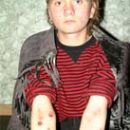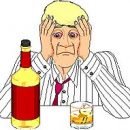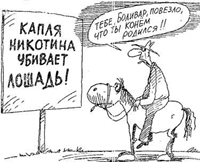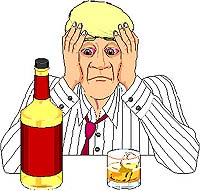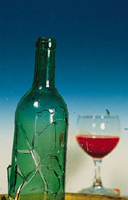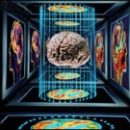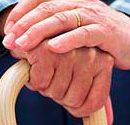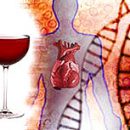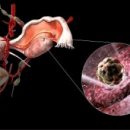Signs of use of specific drugs, t.E what happens with a drug addict as a result of receiving one or another drug. I don't want to talk about that if you find a child - needles, syringes, green grass similar to dill and t.n objects, or see traces from injections, you should be clear to you that it means.
Content
General features of drug use
- The appearance and behavior in one way or another resembles the state of alcohol intoxication, but in the absence of smell of alcohol from the mouth or at a weak smell that does not correspond to the state;
- Change consciousness: narrowing, distortion, acknowledgment;
- Changing mood: Digestible fun, mixness, chatty, mallance, aggressiveness, obviously not corresponding to this situation;
- Motor activity change: increased gesture, redundancy of movements, non-perfection or immobility, lethargy, relaxation, striving for peace (regardless of situation);
- Changes in coordination of movements: their smoothness, speed, proportionality (squeeziness, sharpness, inaccuracy), instability when walking, shaking the body even in the sitting position (especially explicitly with eyes closed), broken handwriting;
- Changing the color of the skin: the pallor of the face and the whole skin or, on the contrary, redness of the face and the upper part of the body;
- Shine eye;
- Strongly narrowed or highly extended pupils that are not reacting to light;
- Changing salivation: increased salivation or, on the contrary, dry mouth, dry lips, voices;
- Changing speech: its acceleration, underlined expressiveness, or slowness, insensity, fuzziness of speech («Porridge in the mouth»).
Differences of signs depending on the drug
When using cannabis - Drug addict expanded pupils, red eyes, redness of lips, dry mouth («Sushnyak»). Addict is moving all in motion. Speech accelerated, hurried. Very faithful sign-browse appetite, usually on the outcome of intoxication.
When receiving opiates - drowsiness, in the most unsuitable moments («Rubit»), can forget about the caviar cigarette and burn it, or pick it up, periodically wakes up and immediately begins to take part in a conversation. The speech of the drug addict is slow, he stretches words, can once again talk about the same. In this state, he is good, calm, if he does not interfere with. A very faithful sign, which is unusually narrow, does not respond to light, t.e does not expand («Sorting Zrak»). Leather-pale, but lips can be sweaty, blushing. Painful sensitivity reduced strongly. The general feature is a violation of sleep and waking mode (late to go to bed and get up late (if there is a drug or money)).
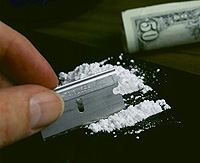 When taking psychostimulators - The drug addict is extremely revived, rapidly in actions and decisions. Can not sit in one place. Very quickly say, jump from one topic to another. Extended pupils. Quickly fulfill all the cases. If the addict has a drug or money for him, he may be in such a state for several days. Some types of psychostimulants greatly increase the sexual desire of the drug addict, so often psychostimulants are used together with a woman. Drug addicts can be rented for several hours by some one thing, for example, to clean the house.
When taking psychostimulators - The drug addict is extremely revived, rapidly in actions and decisions. Can not sit in one place. Very quickly say, jump from one topic to another. Extended pupils. Quickly fulfill all the cases. If the addict has a drug or money for him, he may be in such a state for several days. Some types of psychostimulants greatly increase the sexual desire of the drug addict, so often psychostimulants are used together with a woman. Drug addicts can be rented for several hours by some one thing, for example, to clean the house.
When taking hallucinogenov - Symptoms flow out of the name, a variety of hallucinations - visual when drug addicts are seen by different animal rats, crocodiles, flies, beetles, snakes, he can look at the floor and it seems to him that there is a swamp with snakes, someone can talk to him and T.NS., Hearing hallucinations - when a drug addict to hear the voices that someone says with him, a drug addict can talk about it «someone». With long-term use or when the reception is stopped, there are often depressed, psychosis.
When receiving sleeping drugs - Looks like an alcoholic intoxication. Speech is vivid, brazening. It happens dry mouth. Coordination of movements is broken. When receiving some sleeping pills in large doses, halucinations can be.
When receiving volatile drugs - Also reminiscent of alcohol intoxication, noisy causing behavior. From the child smells like acetone, gasoline, glue «Moment». Often there are hallucinations, because of them teenagers and begin to use, they call hallucinations «cartoons».
By determining the WHO, dependence (drug and toxicization) is a state of periodic or chronic intoxication caused by the use of a natural or synthetic substance characterized by the following features:
- Mastering the desire (obsession) or an indispensable attraction (compulsion) to continue the use of this substance, producing it by any ways,
- Trend increase dose (tolerance growth),
- The emergence of personal or social problems due to abuse.

